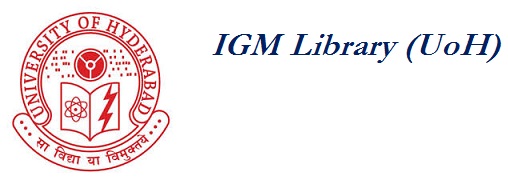The cognitive structure of scientific revolutions / Hanne Andersen, Peter Barker, Xiang Chen.
Andersen, Hanne, 1964-| Call Number | 509/.04 |
| Author | Andersen, Hanne, 1964- author. |
| Title | The cognitive structure of scientific revolutions / Hanne Andersen, Peter Barker, Xiang Chen. |
| Physical Description | 1 online resource (xvii, 199 pages) : digital, PDF file(s). |
| Notes | Title from publisher's bibliographic system (viewed on 05 Oct 2015). |
| Contents | Revolutions in science and science studies -- Kuhn's theory of concepts -- Representing concepts by means of dynamic frames -- Scientific change -- Incommensurability -- The Copernican revolution -- Realism, history, and cognitive studies of science. |
| Summary | Thomas Kuhn's Structure of Scientific Revolutions became the most widely read book about science in the twentieth century. His terms 'paradigm' and 'scientific revolution' entered everyday speech, but they remain controversial. In the second half of the twentieth century, the new field of cognitive science combined empirical psychology, computer science, and neuroscience. In this book, the theories of concepts developed by cognitive scientists are used to evaluate and extend Kuhn's most influential ideas. Based on case studies of the Copernican revolution, the discovery of nuclear fission, and an elaboration of Kuhn's famous 'ducks and geese' example of concept learning, this volume, first published in 2006, offers accounts of the nature of normal and revolutionary science, the function of anomalies, and the nature of incommensurability. |
| Added Author | Barker, Peter, 1949- author. Chen, Xiang, 1954- author. |
| Subject | Kuhn, Thomas S. Science Philosophy History 20th century. Science History 20th century. Paradigm (Theory of knowledge) COGNITION. Constructivism (Philosophy) |
| Multimedia |
Total Ratings:
0
02677nam a22004458i 4500
001
vtls001598713
003
VRT
005
20230127111500.0
006
m|||||o||d||||||||
007
cr||||||||||||
008
230127s2006||||enk o ||1 0|eng|d
020
$a 9780511498404 (ebook)
020
$z 9780521855754 (hardback)
020
$z 9781107637238 (paperback)
035
$a (UkCbUP)CR9780511498404
039
9
$y 202301271115 $z santha
040
$a UkCbUP $b eng $e rda $c UkCbUP
050
0
0
$a Q174.8 $b .A53 2006
082
0
0
$a 509/.04 $2 22
100
1
$a Andersen, Hanne, $d 1964- $e author.
245
1
4
$a The cognitive structure of scientific revolutions / $c Hanne Andersen, Peter Barker, Xiang Chen.
264
1
$a Cambridge : $b Cambridge University Press, $c 2006.
300
$a 1 online resource (xvii, 199 pages) : $b digital, PDF file(s).
336
$a text $b txt $2 rdacontent
337
$a computer $b c $2 rdamedia
338
$a online resource $b cr $2 rdacarrier
500
$a Title from publisher's bibliographic system (viewed on 05 Oct 2015).
505
0
0
$g 1. $t Revolutions in science and science studies -- $g 2. $t Kuhn's theory of concepts -- $g 3. $t Representing concepts by means of dynamic frames -- $g 4. $t Scientific change -- $g 5. $t Incommensurability -- $g 6. $t The Copernican revolution -- $g 7. $t Realism, history, and cognitive studies of science.
520
$a Thomas Kuhn's Structure of Scientific Revolutions became the most widely read book about science in the twentieth century. His terms 'paradigm' and 'scientific revolution' entered everyday speech, but they remain controversial. In the second half of the twentieth century, the new field of cognitive science combined empirical psychology, computer science, and neuroscience. In this book, the theories of concepts developed by cognitive scientists are used to evaluate and extend Kuhn's most influential ideas. Based on case studies of the Copernican revolution, the discovery of nuclear fission, and an elaboration of Kuhn's famous 'ducks and geese' example of concept learning, this volume, first published in 2006, offers accounts of the nature of normal and revolutionary science, the function of anomalies, and the nature of incommensurability.
600
1
0
$a Kuhn, Thomas S.
650
0
$a Science $x Philosophy $x History $y 20th century.
650
0
$a Science $x History $y 20th century.
650
0
$a Paradigm (Theory of knowledge)
650
0
$a COGNITION.
650
0
$a Constructivism (Philosophy)
700
1
$a Barker, Peter, $d 1949- $e author.
700
1
$a Chen, Xiang, $d 1954- $e author.
776
0
8
$i Print version: $z 9780521855754
856
4
0
$u https://doi.org/10.1017/CBO9780511498404
999
$a VIRTUA
No Reviews to Display
| Summary | Thomas Kuhn's Structure of Scientific Revolutions became the most widely read book about science in the twentieth century. His terms 'paradigm' and 'scientific revolution' entered everyday speech, but they remain controversial. In the second half of the twentieth century, the new field of cognitive science combined empirical psychology, computer science, and neuroscience. In this book, the theories of concepts developed by cognitive scientists are used to evaluate and extend Kuhn's most influential ideas. Based on case studies of the Copernican revolution, the discovery of nuclear fission, and an elaboration of Kuhn's famous 'ducks and geese' example of concept learning, this volume, first published in 2006, offers accounts of the nature of normal and revolutionary science, the function of anomalies, and the nature of incommensurability. |
| Notes | Title from publisher's bibliographic system (viewed on 05 Oct 2015). |
| Contents | Revolutions in science and science studies -- Kuhn's theory of concepts -- Representing concepts by means of dynamic frames -- Scientific change -- Incommensurability -- The Copernican revolution -- Realism, history, and cognitive studies of science. |
| Subject | Kuhn, Thomas S. Science Philosophy History 20th century. Science History 20th century. Paradigm (Theory of knowledge) COGNITION. Constructivism (Philosophy) |
| Multimedia |

